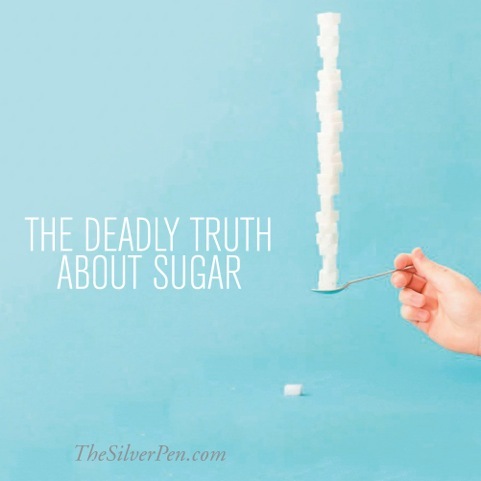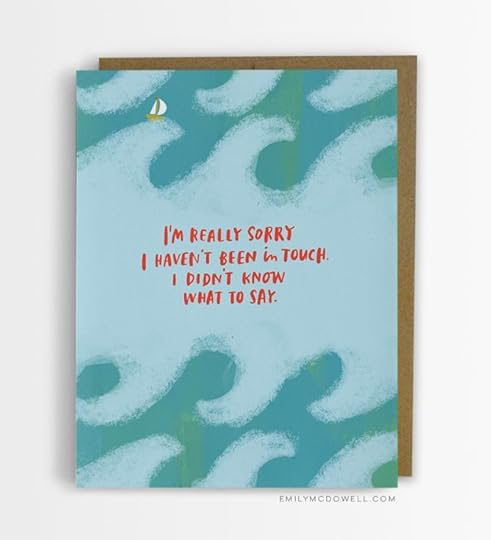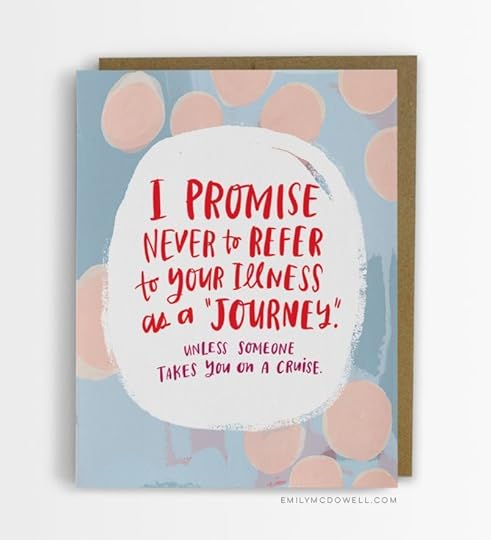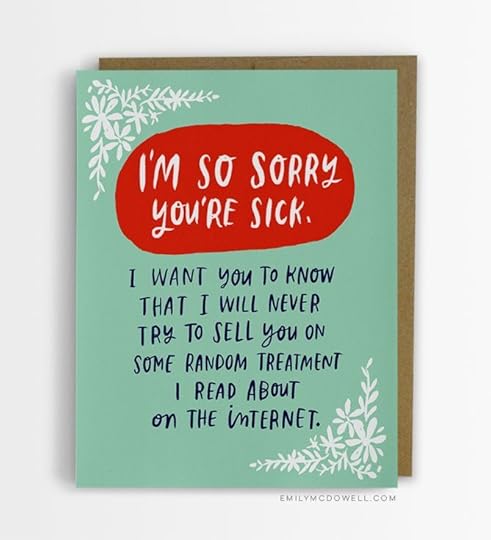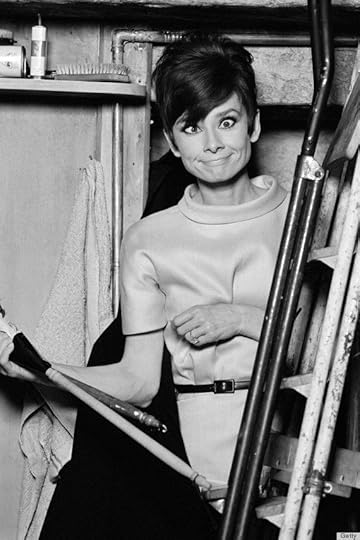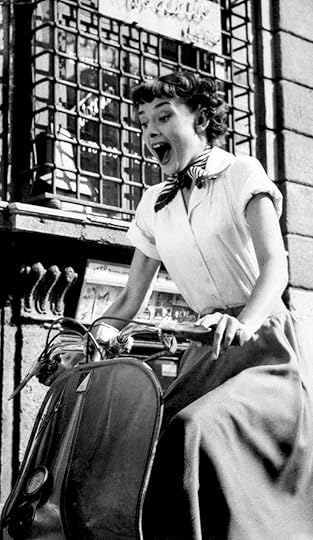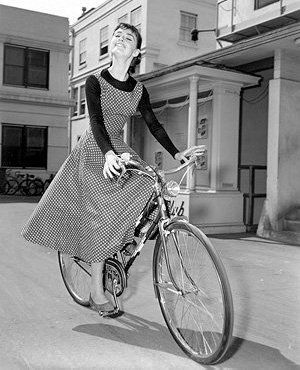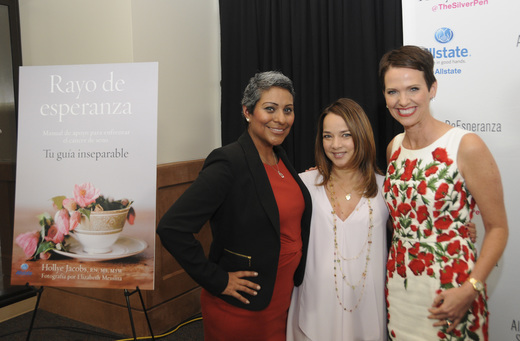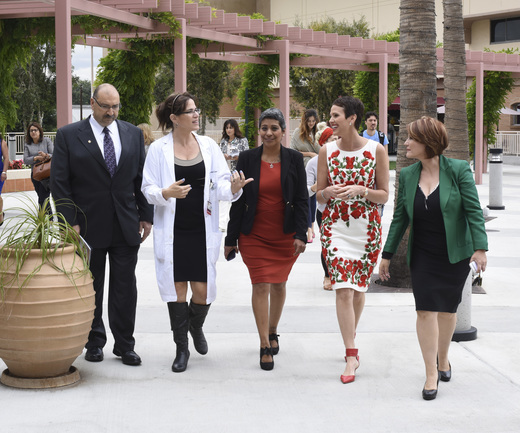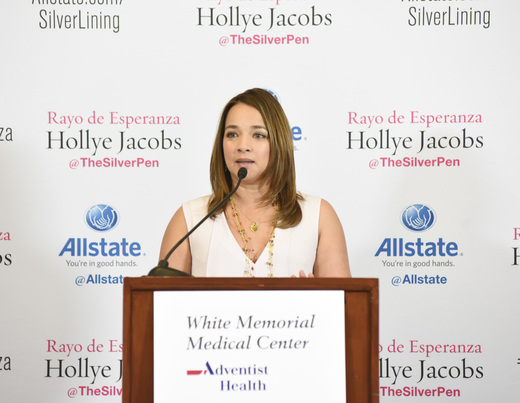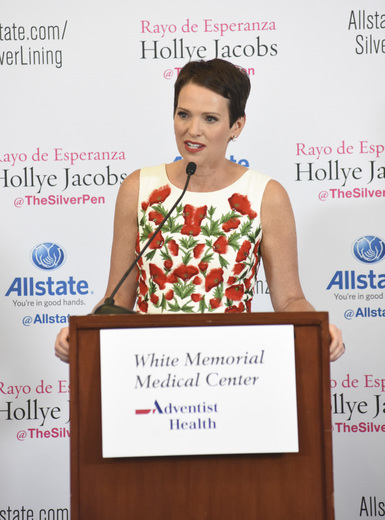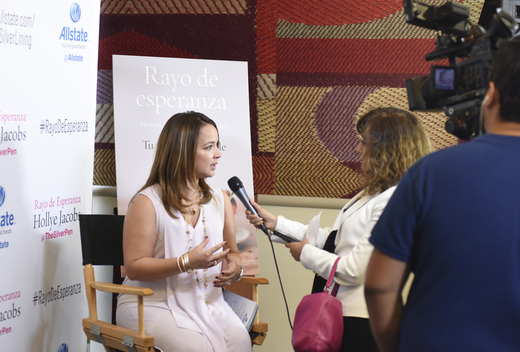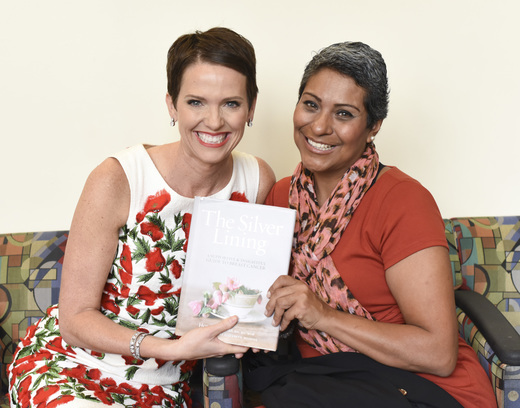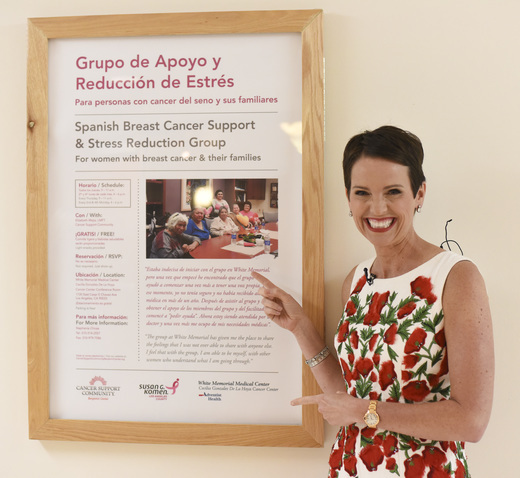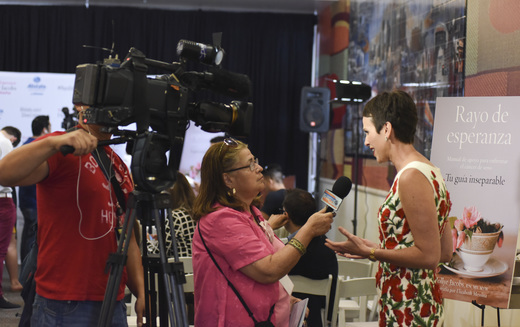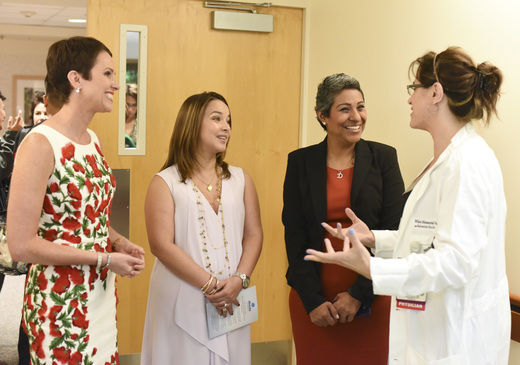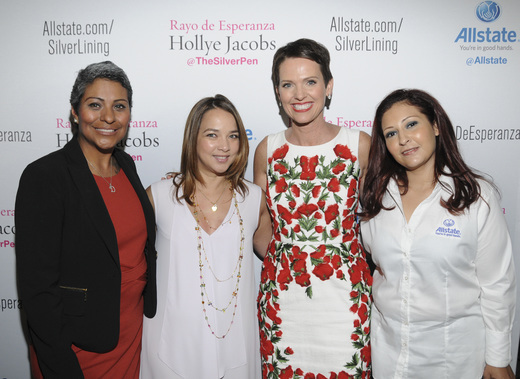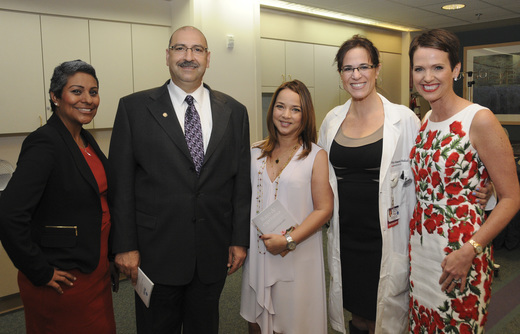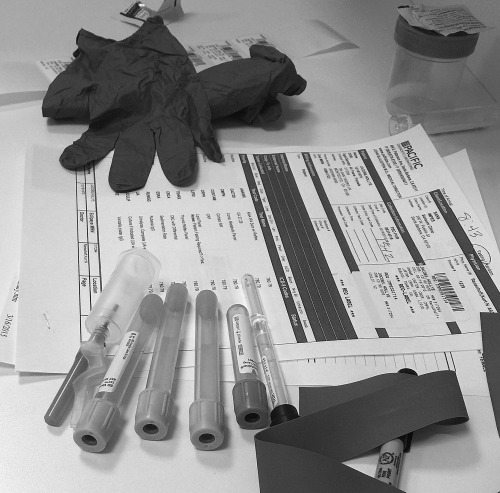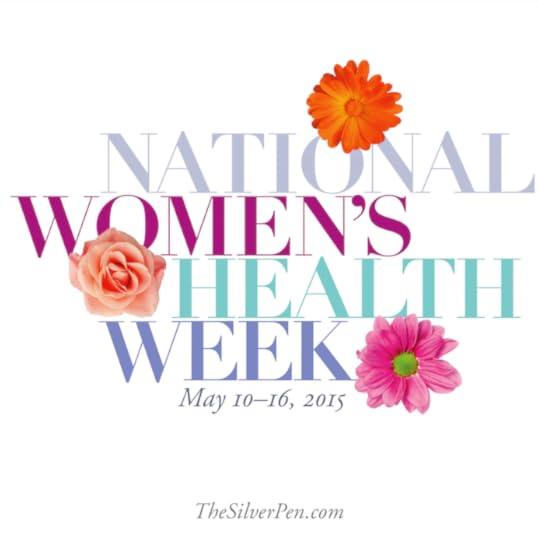Hollye Jacobs's Blog, page 3
June 8, 2015
The Deadly Truth About Sugar
Ever heard someone say: “Buy Agave Nectar over honey because it’s much healthier! It’s a natural sweetener.” I so bought into this claim, but the truth of the matter is that it couldn’t be further from the truth. Sorry to be the bearer of bad news. Golly…I wish wish wish it were true. But it isn’t. There is just way too much conflicting information going around about the effects of sugar and how good or how bad it is for our bodies (mainly bad, by the way. Again, sorry).
Here are a list of 7 things that are extrememly important (and true!) to know about sugar.
1. By nature, sugar is duplicitous. When talking about “sugar” we are primarily referring to table sugar… you know, the stuff that is typically derived from sugarcane or beets. It’s also commonly called sucrose, which is made up of about 50% glucose and 50% fructose. It is REALLY important to know the difference bewteen “gluc” and “fruct” as they are processed much differently in the body.
2. Fructose=Fat There is no way around this one. Fructose is straight up terrible for you. Unlike glucose which is processed in your gut and can be used by every cell in your body, fructose bypasses your stomach and goes straight to your liver. Some of the fructose gets stored as glycogen but more often your body turns the fructose into triglycerudes (a/k/a FAT!). This wouldn’t be a big deal if food these days weren’t completely and sneakily loaded with it. Another tip to be aware of is that fructose in it’s purest form is actually 70% sweeter than table sugar, which of course makes it that much more addictive!
3. Sugar is addictive. Knew that one already, didn’t you? Heaven knows I know this! Sugar has the power to mess with our dopamine receptors which means that in order to get the next dopamine spike you need to consunme a greater dose of sugar than the serving before. That’s why over 600,000 food products are laced with some form of sugar because 1.) it’s cheap and 2.) it keeps you coming back for more. Yucky. Yucky. Yucky.
4. Fructose is a chronic liver toxin. Eating too much fructose is becoming more and more commonly associated with chronic diseases such as slower metabolism, heart disease, higher cholesterol, fattyliver diease, obesity, hypertension, etc. The list just goes on and on! One of the scariest things that fructose can do is cause leptin resistance which is the hormone that tells you whether or not you are full. If you break this switch, then hunger control will become very, VERY difficult.
5. Stripping fiber from foods leads to increased sugar to our system. Normally plants with fructose are equipped with fiber which acts as a safeguard in your body. Fiber slows down digestion and the absorption of fructose. However, with the juicing craze that’s going around (which don’t get wrong there are MANY benefits to juicing!) and the breeding of fruits for more sweetness and a longer shelf life, fiber is being destroyed in these natural foods and in turn increasing the body’s sugar consumption. By the way, the ONLY juice that I drink is all green juice. Though it took a little getting used to, the benefits (not having sugar) far outweighed the challenges (getting used to the taste).
6. “Natural” sugar is misleading. Don’t fall for it! Just because fructose is present in whole fruits, veggies, seeds, and nuts DOES NOT mean that it is good for you. Here is a list of common “natural” sweeteners that really are sneakily housing high amounts of fructose:
Agave nectar = 56-97%
High fructose corn syrup = 42-90%
Tapioca syrup = 55%
Table sugar / cane sugar / beet sugar = 50%
Honey = 38-50%
Coconut sugar = 38-48.5%
Yacon syrup = 35%
Maple syrup = 30%-45%
Molasses = 23%
7. Just because sugar has a low glycemic index (GI), it doesn’t mean it’s good for you. The GI scale was created to see how high your blood glucose rises after ingesting 50 grams of carbs of a specific food. 50 grams?!!! That’s alot. Here’s a bit of perspective. Carrots are high in GI, but to get 50 grams of carbs from carrots you would have to eat 1.3 pounds! Therefore, it is really not an effective scale to measure with. So don’t use it to justifiy your sugar consumption. Also, as said before, sugar is often times more than just glucose. All sugars weren’t created equally; they metabolize differently in the body and they each have their own ramifications if eaten too liberally.
Like I said, sorry to be the bearer of bad news here. But the Silver Lining is that once you’re off the stuff, you will feel oh so so so much better!!
*Sugar facts from Mind Body Green
The post The Deadly Truth About Sugar appeared first on The Silver Pen.
June 7, 2015
Overcoming the Dreadful Distraction Habit
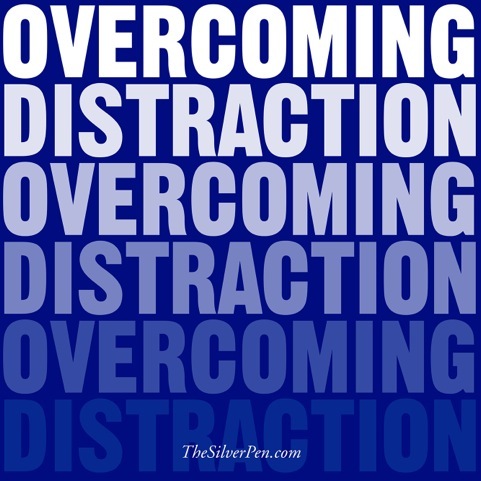 Overcoming the Dreadful Distraction Habit
Overcoming the Dreadful Distraction Habit
Recently I am finding myself distracted. Despite coming into my office on a mission to get work done, my mind wanders. In a big and ridiculously annoying way. It seems as though after an hour or two (or three!) passes, I realize that I have only completed what looks to be about fifteen minutes worth of work. The frustrating part is that I don’t even realize I am not getting my work done until after the hour has passed and my mind wanders back to where it was supposed to be when I entered the office. Are you following? Oy. I am driving myself bananas!
What did I do instead of my work tasks you ask? Well, I checked Instagram, read a few interesting articles on my writing topic, talked with a girlfriend on the phone for a few minutes, checked every email that popped up on my screen, and I even made myself a cup of tea. Oh and of course, started a work task that has yet to be finished. And THEN, I find myself utterly annoyed with myself. It is a ridiculous circle.
This dreadful distraction habit has truly been eating away at me and it’s time to take control. Here are a few tips from one of my favorite bloggers Leo Babauta (who loves to share what he writes, by the way!) that I have found immensely helpful!
Recognizing when it happens
One of the insidious things about the distraction habit is that we often don’t even realize it’s happening. It sneaks up on us, like old age, and before we know it we’re addicted and powerless.
But actually we’re not powerless. The power we have is our awareness, and you can develop it right now. Pay attention to what sites you visit, how often you’re looking at your phone, how long you’re spending in front of a screen all day.
What I did when I wanted to develop an awareness of my smoking urges was carry around a pencil and small scrap of paper, and put a tally mark on it each time I had the urge to smoke. I could still smoke, but I’d have to put a tally mark first.
This built my awareness muscle, and it allowed me to insert a small space between the urge and my subsequent action. Into that space, however small, I could eventually make a choice. That was where the power came in.
Consider what’s important
What’s truly important to you? Social media? News? What everyone else is doing all the time? Games?
I’d submit that we try to do everything, but then we’re not really focusing on anything. We’re not going to make any of our little fantasies come true if we pursue all of them.
What is the one thing you want to pursue right now? Can you focus on that for at least a month? If not, maybe it’s not that important to you.
What are the most important things in your life? Pick 3-4, or 5 at the most. How much of your time is devoted to these things? Can you cut out other things to focus on these? Can you give your 4 most important things your full attention?
In my life, my writing, my family, my health, and my learning are my four most important things. And no, I don’t always devote my full attention to them. I often need to step back and remind myself of what’s important.
See what’s going on
Once you’re aware of the distractions and urges, you can start to examine the causes.
After hours of following temptations online (learning all about cycling and programming, for example), I stopped and asked myself, “What’s this all about?”
It was about fear — the fear that I didn’t know what I was doing and was going to screw it all up. I now know that it doesn’t matter if I screw it up. My value as a person isn’t tied to my successes or failures. So I closed all the tabs, and decided to focus on one program, and one bike ride. I’ll learn as I do.
My distractions are also often about fantasies — I really hope that I’ll be a great programmer or start doing century bike rides or Ironman triathlons. Realistically, I don’t have time to do any of that. So I have to let the fantasies go, because they almost never come true. Unless you’re willing to devote your entire life to one of them for a year or two.
Distractions, of course, are often about the fear of missing out. We can’t possibly take part in every cool thing that everyone else is doing, but we also don’t want to miss out on any of it. So we look online for what’s going on, what other people are doing and saying, what’s hot. None of that actually matters. What matters is being content, doing things that make people’s lives better, learning, being compassionate, helping. So let’s let go of what we’re missing out on, and focus on the difference we want to make in the world.
Fall in love all over again
In his book, “The Art of Stillness,” Pico Ayer says that “sitting still is a way of falling in love with the world and everything in it.”
This is absolutely true. This is why distractions can be so harmful. They’re turning us away from the miracle of life all around us.
Sit still for a few minutes, and pay attention to what’s around you. Notice the quality of the light. Appreciate any people who might be nearby. Notice the quality of your thoughts, the sensations of various parts of your body, the loveliness of your breath as it comes in and out.
Fall in love with life all over again. And then devote yourself lovingly to it completely.
Take action
So you’re building an awareness, and you’ve examined your causes. If you haven’t yet, take a few minutes to walk around your office or house, or better yet get outside, and contemplate these things. This article can wait.
Now there are further steps you can take. Consider taking one or more of these:
Start closing as many browser tabs as you can. Bookmark some things, save others in your favorite “read later” service (such as Instapaper or Pocket), and let others go.
Block your favorite distractions for a few hours. Games, social media sites, news sites. You don’t really need to go to them that often.
Write down the times you’re going to check email and other messages. Want to process email for 20 minutes at 10 a.m., 1 p.m., and 4p.m.? Write that down. Stick to it.
Get away. Go outside for a walk. Ride your bike. Go for a run. Take the kids to the park.
Meditate. Sit still for just a couple minutes, without any distractions, and put your attention on your breath. Return to the breath when you get distracted.
Read. A paper book. Close all screens and just give yourself some quiet reading time.
Find a place with no wifi. Or turn off your router. Write without distractions. Close all applications besides your writing program.
Delete social media accounts. I recently went back on Facebook to connect with my family during my dad’s hospitalization and death. But the privacy violations and useless things being posted there sent me running, and I deleted my account again.
Delete distractful apps on your phone. Games, social media, whatever you tend to turn to when you want a bump of distraction.
Eat without a device. Pay attention to your food. Notice the textures, flavors, colors, healthfulness that you’re putting into the temple of your body.
Of course, there are other things you can do. Go on a retreat. Practice mindfulness in bits throughout the day. Take a day off of screens. The possibilities are endless.
The post Overcoming the Dreadful Distraction Habit appeared first on The Silver Pen.
June 3, 2015
Emily McDowell Sympathy Cards
As you all know, I have talked and talked (and talked!) about what to say and what not to say to someone who has cancer. It is stupendously important for friends of people who have cancer to know how to connect and communicate about sickness and suffering without bringing dreaded false cheer or just plain offensiveness to the conversation. It is such a fine line that I – as a patient and a friend! – have experienced firsthand. Not being sure what to say or do (or not say or do!) feels just plain awful.
Well, the Silver Lining is that my friend Emily McDowell, a fantabulous LA-based graphic designer and artist, has launched a new series of emotionally direct greeting cards that say the things she wanted to hear when she was diagnosed with stage 3 Hodgkin’s lymphoma at the age of 24. After 9 months of chemo and radiation, she has been cancer-free ever since and on a mission to help friends and family better communicate with loved ones who are ill.
Emily says that the loneliness and isolation she felt when many of her close friends disappeared during her illness because they didn’t know what to say, or said the absolute wrong thing without realizing it. This is what motivated her to create empathy cards.
Most of us struggle to find the right words in the face of a friend or loved one’s major health crisis, whether it’s cancer, chronic illness, mental illness, or anything else. It’s a really tough problem; someone we love needs our support more than ever, but we don’t have the right language for it.
I created this collection of empathy cards for serious illness because I believe we need some better, more authentic ways to communicate about sickness and suffering. “Get well soon” cards don’t make sense when someone might not. Sympathy cards can make people feel like you think they’re already dead. A “fuck cancer” card is a nice sentiment, but when I had cancer, it never really made me feel better. And I never personally connected with jokes about being bald or getting a free boob job, which is what most “cancer cards” focus on.
With Empathy Cards, my goal is to help people connect with each other through truth and insight, which is one of the founding principles of this brand. I want the recipients of these cards to feel seen, understood, and loved.
The cards provide better, more authentic ways to communicate about sickness, suffering, and F-bomb cancer between friends, family, and patients. Her goal is to help people connect with each other through truth and insight and to make the recipients of the cards feel understood and loved.
All of the cards include bright colors, minmal imagery, and a homey touch that Emily hand draws on Photoshop with a digital pen. Talk about some major talent!!
Here are a few of her most popular cards. I love ’em. What do you think?
Check out Emily’s website at: http://info.emilymcdowell.com/empathy-cards-for-serious-illness/
The post Emily McDowell Sympathy Cards appeared first on The Silver Pen.
May 31, 2015
Musical Monday: Best Day Of My Life
Every morning on our way to school, my (9 year old!) Baby Girl (her nickname) and I have a jam session in which she is the DJ and I am dance, drive and sing-a-long. My personal favorite in her mix is Best Day of My Life by the American Authors. This song gives me goosebumps each and every time that I hear it. I mean, really. How could it not?
Hope that TODAY you have the BEST day of your life! Seriously. I do.
I had a dream so big and loud
I jumped so high I touched the clouds
Wo-o-o-o-o-oh, wo-o-o-o-o-oh
I stretched my hands out to the sky
We danced with monsters through the night
Wo-o-o-o-o-oh, wo-o-o-o-o-oh
I’m never gonna look back
Woah, never gonna give it up
No, please don’t wake me now
This is gonna be the best day of my life
My li-i-i-i-i-ife
This is gonna be the best day of my life
My li-i-i-i-i-ife
I howled at the moon with friends
And then the sun came crashing in
Wo-o-o-o-o-oh, wo-o-o-o-o-oh
But all the possibilities
No limits just epiphanies
Wo-o-o-o-o-oh, wo-o-o-o-o-oh
I’m never gonna look back
Woah, never gonna give it up
No, just don’t wake me now
This is gonna be the best day of my life
My li-i-i-i-i-ife
This is gonna be the best day of my life
My li-i-i-i-i-ife
I hear it calling outside my window
I feel it in my soul (soul)
The stars were burning so bright
The sun was out ’til midnight
I say we lose control (control)
This is gonna be the best day of my life
My li-i-i-i-i-ife
This is gonna be the best day of my life
My li-i-i-i-i-ife
This is gonna be, this is gonna be, this is gonna be
The best day of my life
Everything is looking up, everybody up now
This is gonna be the best day of my life
My li-i-i-i-i-ife
The post Musical Monday: Best Day Of My Life appeared first on The Silver Pen.
May 26, 2015
Audrey Hepburn
Audrey Hepburn
You know by now that I am a huge fan of Audrey Hepburn’s. Her philanthropy (she worked for UNICEF for 38 years!), uniqueness, laughter (she believed that it was a calorie burner!), and style never cease to amaze and inspire me. She didn’t go for trends or try to reinvent herself each season. She was – and somehow continues to be – timeless! One thing that we share in common is the need to be alone. She once said, “I have to be alone very often. I’d be quite happy if I spent from Saturday night until Monday morning alone in my apartment. That’s how I refuel.” I couldn’t agree more. After the year that I have had, I relish each and every moment that I can be all.by.myself. Anyhoo, I thought I’d take the time to share some of my favorite Audrey images. Her smile and laugh are utterly and magnificently contagious!
“For attractive lips, speak words of kindness. For lovely eyes, seek out the good in people. For a slim figure, share your food with the hungry. For beautiful hair, let a child run their fingers through it once a day. For poise, walk with the knowledge that you never walk alone. People, more than things, have to be restored, renewed, revived, reclaimed, and redeemed. Remember, if you ever need a helping hand, you will find one at the end of each of your arms. As you grow older, you will discover that you have two hands, one for helping yourself and the other for helping others.And the beauty of a woman, with passing years only grows!”
“I believe in being strong when everything seems to be going wrong. I believe that happy girls are the prettiest girls. I believe that tomorrow is another day, and I believe in miracles”
“People, even more than things, have to be restored, renewed, revived, reclaimed, and redeemed; never throw out anyone.”
“Living is like tearing through a museum. Not until later do you really start absorbing what you saw, thinking about it, looking it up in a book, and remembering – because you can’t take it in all at once.”
“I believe in pink. I believe that laughing is the best calorie burner. I believe in kissing, kissing a lot. I believe in being strong when everything seems to be going wrong. I believe that happy girls are the prettiest girls. I believe that tomorrow is another day and I believe in miracles.”
“The most important thing is to enjoy your life – to be happy – it’s all that matters.”
“You can tell more about a person by what he says about others than you can by what others say about him.”
“There is more to feminine charm than just measurements. I don’t need a bedroom to prove my womanliness. I can convey just as much femininity, picking apples off a tree or standing in the rain.”
“I love people who make me laugh. I honestly think it’s the thing I like most, to laugh. It cures a multitude of ills. It’s probably the most important thing in a person.”
The post Audrey Hepburn appeared first on The Silver Pen.
May 19, 2015
Breast Cancer Information: Rayo de Esperanza
As many of you may know, in October o 2014, Allstate Insurance and I released “The Silver Lining Companion Guide” which is a condensed version of our (mine and Elizabeth Messina’s) original book, The Silver Lining: A Supportive and Insightful Guide to Breast Cancer.
Our goal was (and still is!) to get this Guide into the hands of everyone impacted by breast cancer.
This was made possible by Allstate’s (extremely!) generous commitment to buying a Guide for every person impacted by the disease between October 2014 and October 2015. As you also may recall, 250,000 people are diagnosed with FBC each and every year.
Allstate’s generosity doesn’t stop there! I am oh-so-very excited to announce the launch of the new Spanish-language version of the companion guide, “Rayo de esperanza: Manual de apoyo para enfrentar el cancer de seno.” We have translated the Spanish language guide from the original English language version in order to resonate with the Latina community. We know that there is real need for this type of resource in the Latina community, especially since there are no other resources like it in existance.
I have always believed that the ultimate Silver Lining of my breast cancer diagnosis, treatment and recovery was having the opportunity to try and make the experience better for those who have to follow me down this difficult path. It brings me great joy to now know that the Latina community can join us all in finding Silver Linings throughout breast cancer.
The free companion guide is available for download or for pick up at participating distribution centers and select Allstate agencies nationwide. Download or find the nearest participating distribution center at Allstate.com/SilverLining.
Here are a few photos from our launch event at White Memorial in LA last week!
The post Breast Cancer Information: Rayo de Esperanza appeared first on The Silver Pen.
May 12, 2015
The ABC’s of IV’s
Needlestick
I don’t like having needles stuck in my arms. That may be odd to read, but please allow me to explain. You see, pre-chemo, I had amazing veins. Prior to having my blood drawn or an IV placed, my veins would jump up and down vying to be picked for the stick saying, “Pick Me! Pick Me! Pick Me!”
After chemo, it’s as if they all became little turtles who crawled back into their shells to hide. In other words my veins are horrendous. However, that doesn’t change the fact that I still have to have my blood drawn and/or the occasional IV placed. The Silver Lining is that I know now how to do this. So, if you are just starting cancer treatment (or you just have needle phobia) here are a few of the basics that WILL help you when you have to have an IV (which I hope that you don’t by the way!):
1. You have alternatives. If you need daily medications running through your veins, lots of infusions, or your viens collapse easily there are other options to consider:
An implantable port- surgically inserted under the skin of your chest or upper arm. Needles can be inserted into the port without poking you.
Hickman catheter or “central line”- a tube is inserted into a large vien near your collarbone. It serves the same purpose as the implantable port in that medications can be given through the central line, avoiding needle pokes.
It is SUPER important to keep the port or central line sterile at all times. If the area becomes red or sore at the insertion site, tell your doctor. These devices connect directly to your bloodstream and if an infection were to occur, it could be as life threatening as cancer.
2. Ask for the nurse, not the doctor. Yes, doctors know how to insert IV’s. However, they don’t do it nearly as often as nurses do. Therefore, nurses are much more likely to get the line started with the least amount of pain and fuss. Just sayin’…
3. Ask for a re-do. If your IV starts to hurt or is uncomfortable then politely ask the nurse to re-do it. This is a bit of a hassle, but the whole point of an IV is for the medications and/or fluids to go into your veins not into your interstitial space. Be stern, but polite and get it done ASAP.
4. Choose your IV site carefully. When the nurse asks you where you would like your IV to be placed (hand or forearm) consider how much you’ll be moving during the infusion. For example, I always got my IV’s put in my forearm because I knew that I was going to be typing or playing on a tablet with my hands during the infusion. The more you move the place where the IV is, the more sore it will become.
5. Plan ahead for bathroom breaks. Medications are almost always delivered with a big bag of saline solution and believe me… your bladder gets full real quickly! Trying to navigate out of your bed, around the corner, and down the hall while pulling an IV pole alongside you is really going to slow you down. So plan for it. Believe me it’s best for everyone.
6. Do Jumping Jacks. Seriously. I always look like a big bafoon doing jumping jacks before a blood draw, but 25 jumping jacks forces veins out of their hiding places and primes them for a stick. It is a fabulous secret bullet!
7. Heating Pads. Go about 15 minutes early before your appointment and ask for heating pads. Sometimes they are the real, old fashioned heating pads and other times, they are the little plastic ones like in the photo above. The key is putting heat above and below your elbow to get those veins a popping. This really helps!
Do you have any IV tips that you found helpful?
The post The ABC’s of IV’s appeared first on The Silver Pen.
May 11, 2015
National Women’s Health Week
Sunday kicked off National Women’s Health Week. This is a big and wonderful opportunity to empower women to make health a priority (and what’s better than that?). Led by the U.S. Department of Health and Human Services Office on Women’s Health, the goal of this week is to encourage and provide women with steps they can take to improve their overall health.
To me, there is no greater Silver Lining than this!
Today, I am honored to participate in a Twitter chat hosted by Allstate Insurance and Clever Girls. We would love for you to join us at 12:00 pm PST/3:00 pm ET and use the hashtag #AllstateNWHM.
If you can’t join us, here are some tips and suggestions to take the time to think about (and hopefully implement!) this week:
Getting an annual well-women visit
Eating healthy food
Getting active- exercising for at least 30 minutes most days
Maintaining a healthy weight
Limiting alcohol consumptions
Visiting a doctor or nurse for regular check ups
Paying attention to your mental health by getting enough sleep and managing stress
Avoiding unhealthy behaviors such as texting and driving, smoking, not wearing a seatbelt or bicycle helmet
Check out Women’sHealth.gov for more age-specific ways to improve your health and get you started on making it a priority this week.
The post National Women’s Health Week appeared first on The Silver Pen.
May 8, 2015
The Antidote to Stress
The Antidote to Stress
Anxiety, stress, and sadness negatively impact your physical health. Heaven knows that I know this. Further, these stressful emotions can trigger chemical reactions in your body that can lead to inflammation and a weakened immune system. This is hardly new news. The thing of it is: I seem to need constant reminders and hear this time and time again because I’m under a HUMONGOUS amount of anxiety, stress and even a little sadness of late. And the result is that I feel like absolute CRAP. What does this look like? Fatigue (the likes of which are beyond description), weight gain, zit outbreak, more hot flashes than usual…suffice it to say that it ain’t pretty.
However, the Silver Lining is that there are ways to cope, beginning with building the parasympathetic system. In case you don’t know, the parasympathetic system conserves energy as it slows the heart rate, increases intestinal and gland activity, and relaxes sphincter muscles in the gastrointestinal tract. It is also called the rest and digest system. I’m going to write more about it because a) I’m fascinated by it and b) I need to get much more acquainted with it!
But in the meantime, the antidote to stress and anxiety are:
being in nature
(learning to) meditate
alone time
I’m working very (very!!!) hard on incorporating these restorative activities into my life. What works for you?
* Photograph by dear Elizabeth Messina
The post The Antidote to Stress appeared first on The Silver Pen.
May 5, 2015
Breast Biopsies Can Leave Room for Doubt About Cancer
 Breast Biopsies Can Leave Room for Doubt About Cancer
Breast Biopsies Can Leave Room for Doubt About Cancer
Recently, I came across an enlightening article in the New York Times by Denise Grady about a study identifying the doubt that can be raised by breast biopsies. Ugh. Sorry to be the bearer of bad news.
As I know you know, but just to remind you, a biopsy is the procedure used to remove and evaluate a tissue sample for the presence of cancer. A pathologist is the doctor who does the tissue evaluation. If cancer is indeed present (which I sure hope that it isn’t!), the pathologist can then identify some of the cancer’s characteristics, including size, whether it is invasive or non-invasive, the speed at which the cancer cells are growing, the grade, and the hormone receptors, to name a few.
Dr. Joann Elmore conducted a study using a panel of three expert pathologists who examined biopsy slides from 240 women. Her findings showed that breast biopsies are great at telling the difference between healthy and cancerous tissue. However, they are much less reliable when the tissue is somewhere in the “gray zone”. Gray Zone. I don’t like that zone. Further (sorry, again), when breast biopsies are misdiagnosed, which thereby has the potential to using either too-aggressive treatment or not enough treatment.
After reading her article, my belief about getting a second opinion (which for those of you who don’t know : SECOND OPINIONS ARE ALWAYS A GOOD IDEA!) was really exemplified by her findings. It is so important to remember that biopsy results have the possibility to be misinterpreted and can cause you and your doctors to make choices for your body that may not be the best.
Remember, if you have a good doctor he/she will not be intimidated by the fact that you are getting a second opinion. They should appreciate that their findings are further supported.
Here is the article that I mentioned in case you’d like a little more 4-1-1.
Breast biopsies can leave room for doubt about cancer, study finds
By: Denise Grady
“Biopsy specialists frequently misdiagnose breast tissue, potentially leading to too-aggressive treatment for some women and undertreatment for others, a new study suggests.
The results indicate that breast biopsies are good at telling the difference between healthy tissue and cancer, but less reliable for identifying more subtle abnormalities.
Because of the uncertainty, women whose results fall into the gray zone between normal and malignant — with diagnoses like “atypia” or “ductal carcinoma in situ” — should seek second opinions on their biopsies, researchers say. Misinterpretation can lead women to have surgery and other treatments they do not need, or to miss out on treatments they do need.
The new findings, reported Tuesday in the Journal of the American Medical Association, challenge the common belief that a biopsy is the gold standard and will resolve any questions that might arise from an unclear mammogram or ultrasound.
In the United States, about 1.6 million women a year have breast biopsies; about 20 percent of the tests find cancer. Ten percent identify atypia, a finding that cells inside breast ducts are abnormal but not cancerous. About 60,000 women each year are found to have ductal carcinoma in situ, or DCIS, which also refers to abnormal cells that are confined inside the milk ducts and so are not considered invasive; experts disagree about whether DCIS is cancer.
“It is often thought that getting the biopsy will give definitive answers, but our study says maybe it won’t,” said Dr. Joann Elmore, a professor at the University of Washington School of Medicine in Seattle and the lead author of the new study.
Her team asked pathologists to examine biopsy slides, then compared their diagnoses with those given by a panel of leading experts who had seen the same slides. There were some important differences, especially in the gray zone.
An editorial in JAMA said the findings were “disconcerting” and that the study should be a “call to action” for pathologists and breast cancer scientists to improve the accuracy of biopsy readings, by consulting with one another more often on challenging cases and by creating clearer definitions for various abnormalities so that diagnoses will be more consistent and precise. The editorial also recommended second opinions in ambiguous cases.
A second opinion usually does not require another biopsy; it means asking one or more additional pathologists to look at the microscope slides made from the first biopsy. Elmore said doctors could help patients find a pathologist for a second opinion.
A surgeon not involved with the study, Dr. Elisa Port, chief of breast surgery at Mount Sinai Hospital in Manhattan, said the research underlined how important it is that biopsies be interpreted by highly experienced pathologists who specialize in breast disease.
“As a surgeon, I only know what to do based on the guidance of my pathologist,” Port said. “Those people behind the scenes are actually the ones who dictate care.”
The method
In Elmore’s study, the panel of three expert pathologists examined biopsy slides from 240 women and came to a consensus about the diagnosis.
“These were very, very experienced breast pathologists who have written textbooks in the field,” Elmore said.
Then the slides were divided into four sets, and 60 slides were sent to each of 115 pathologists. The doctors interpreted the slides and returned them, and the same set was sent to the next pathologist.
The goal was to find out how the practicing pathologists stacked up against the experts. The task was tougher than actual practice, because in real cases pathologists can consult colleagues about ambiguous findings and ask for additional slides. They could not do so in the study.
When it came to invasive cancer — cancer that has begun growing beyond the layer of tissue in which it started, into nearby healthy tissue — the outside pathologists agreed with the experts in 96 percent of the interpretations, which Elmore called reassuring.
For completely benign findings, the outside pathologists matched the experts in 87 percent of the readings but misdiagnosed 13 percent of healthy ones as abnormal.
The next two categories occupied the gray zone. One was DCIS. For this condition, the pathologists agreed with the experts on 84 percent of the cases. But they missed 13 percent of cases that the experts had found and diagnosed DCIS in 3 percent of the readings where the experts had ruled it out.
The finding is of concern because DCIS sometimes becomes invasive cancer, and it is often treated like an early-stage cancer, with surgery and radiation. Missing the diagnosis can leave a woman at increased risk for cancer — but calling something DCIS when it is not can result in needless tests and treatments.
The second finding in the gray zone was atypia, in which abnormal, but not cancerous, cells are found in breast ducts. Women with atypia have an increased risk of breast cancer, and some researchers recommend surgery to remove the abnormal tissue, as well as intensified screening and drugs to lower the risk of breast cancer.
But in the study, the outside pathologists and the experts agreed on atypia in only 48 percent of the interpretations. The outside pathologists diagnosed atypia in 17 percent of the readings where the experts had not, and missed it in 35 percent where the experts saw it.
“Women with atypia and DCIS need to stop and realize it’s not the same thing as invasive cancer, and they have time to stop and reflect and think about it, and ask for a second opinion,” Elmore said.
‘More anxiety’
Abby Howell, 57, who lives in Seattle, two years ago had some calcifications show up on a mammogram, which are sometimes a sign of cancer. She was given the option of just mammograms every six months or having a biopsy. She chose the biopsy, thinking it would be definitive. Instead, it showed atypia.
Howell looked up the condition and realized it was unclear whether those odd-looking cells would ever lead to cancer. Surgery was recommended, but she decided to watch and wait instead. So far, her mammograms have been normal, but the experience has shaken her peace of mind.
“If I had to do it all over again, I wouldn’t have jumped for the biopsy,” Howell said. “I really regret it. In a way it’s made more anxiety in my life.”
The post Breast Biopsies Can Leave Room for Doubt About Cancer appeared first on The Silver Pen.

